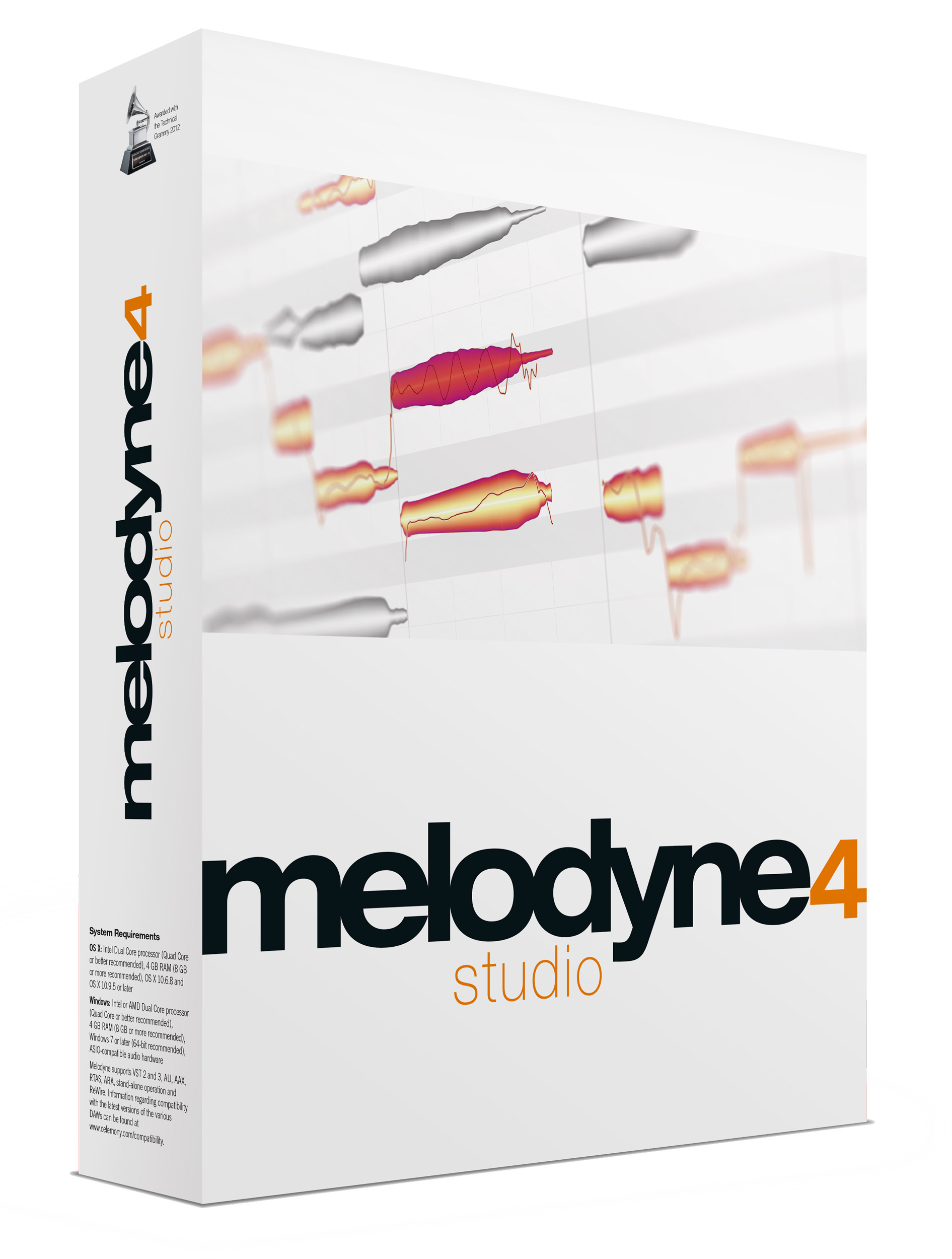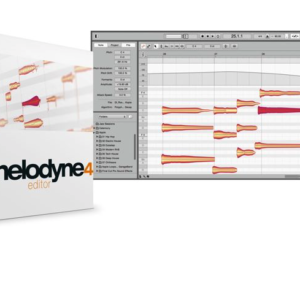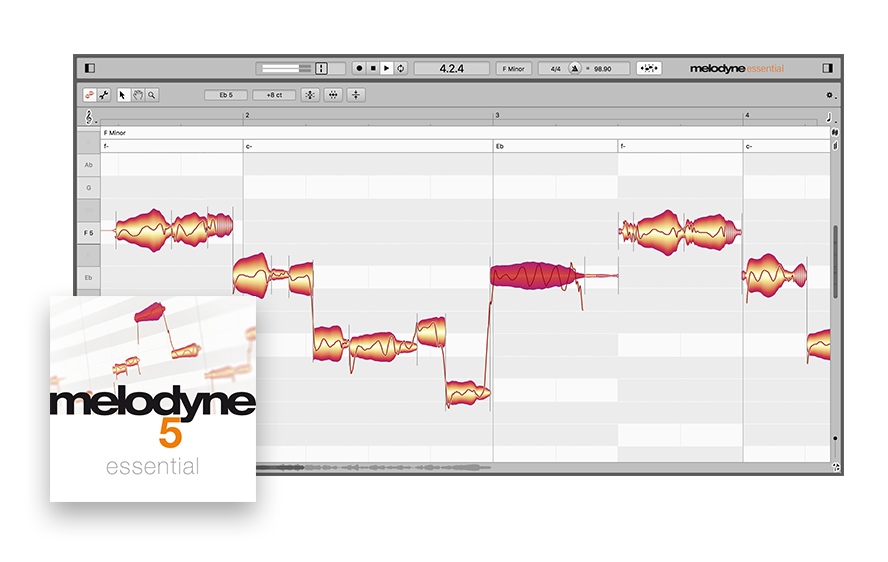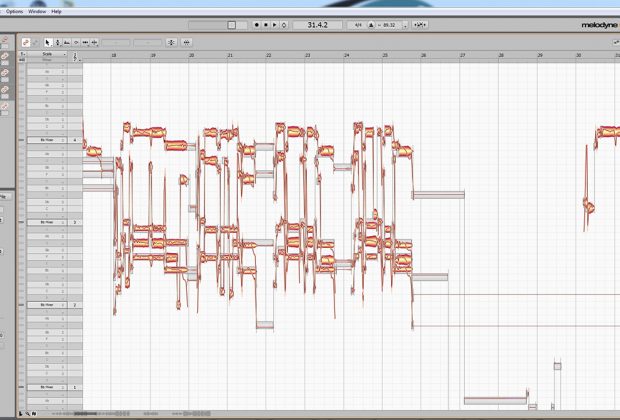Knowing a tool it doesn’t mean just knowing what we can do with it. Let’s find where Melodyne 4 can serve as a life saver.
Upgrade from Melodyne uno or Melodyne plugin to Melodyne 4 editor €149 New in Melodyne 4: The Sound Editor The new “Sound Editor” in Melodyne 4 studio, thanks to “Polyphonic Spectral Shaping,” offers hitherto unknown possibilities for sound design. Melodyne does this in such a way as to be completely undetectable in the final product. Melodyne Free Trial. There is currently a 30-day free trial version of Melodyne 4 Studio. However, I would not suggest downloading unless you are prepared to lay out at least $99 for Melodyne 4 Essential.
by Alex Arsov, Sept. 2019
We’ve covered Melodyne 4 in SoundBytes Magazine previously (here). So instead of pointing out what’s new in the regular updates coming out before version 5 strikes, I’ve decided to make this article a bit different.
I will assume you are familiar with this product, you know the price (which is quite reasonable for such unique tool), you’ve heard what it does and how it does it. Hopefully you’ve also read our Melodyne 4 article, but I’ll speculate that you’ve never really thought this through in detail. Melodyne is not an instrument, nor is it one of those effects that can colour your track according to your desires (after all, almost every DAW comes with such a tool, covering all your needs). This is almost all true.
There is one small difference, however: the full version of Melodyne 4 can analyze and correct polyphonic material one note at a time. OK, you already knew that, so is that something you should throw almost €400 EUR, or even €700 EUR at? Actually, yes, it is. In this article I will present a few examples of where and how this tool can be used, and show you why it is priceless, at least for me.
Sample All The Way

First things first. Countless hit songs are built around an interesting sample. No matter if it is taken from old vinyl or from some sample library (Ueberschall offer a great collection of all sorts of sample compilations, not to mention innumerable other smaller companies that also sell sample packs). In the past I collected different musical magazines that almost always came with free sample packs. Over the years I collected over 20 GB of sounds that I could use in my production. Not that I go with that in every song, but some samples are really cool while some other can save the day when you need a specific instrument, but don’t have the skills to program a realistic part or a good virtual instrument to make it sound real.
The bad thing with those samples is that in most cases you are forced to build a song around them or just use those that have a certain harmony. I assume you get the picture. With Melodyne, a funky minor guitar chord can suddenly become major, or even major 7 or 9, or anything you want. If you don’t go too far, you can also change the key of the chord. I can’t tell you how many times it’s happened that I’ve really liked some sample, and rhythmically it fitted nicely into my arrangement, but it played at an inappropriate harmony. Melodyne 4 suddenly brings my 20 GB collection back to life. Almost everything is possible. There are some other tools that can change key, tempo and similar things, but Melodyne 4 is a dream come true in this case. A very unique tool.
Harmony – What?
The second use takes care of a problem I come across often. Sometimes you find an orchestral or synth line sample that is polyphonic, sounding really interesting and hot, and you’d like to use this sample or even just its harmony to create a different mood with different sounds. But the phrase sounds complicated and contains many notes, and you aren’t completely sure what the hell is going on inside this progression. Or even, God forgive us, you want to analyze a snapshot of some current hit and make something similar. Something that old rockers call inspiration while the new business oriented musical industry calls theft. Come on, most hits use the same chord progression and we are still at war over two similar notes. Anyway, cut a snapshot, put it inside the editor and you get back all the info about the progression. To build a melody or alternative progression around the main one that comes from the sample you really like, you’ll need to know exactly what’s going on inside this sample harmony-wise. Melodyne 4 to the rescue again.
Progression In General
I’m a professional musician. Hypersonic vst. Often I get a request to do something in a genre that is totally new for me. Of course, in such cases Google becomes my best friend, but it has its limitations. You can really pick up some info about the tempo, some general rules, sometimes even about the most used key for that genre, but in most cases, there is nothing about harmonies, and in most cases there are no tutorials on how to play some well-known songs from a particular genre. (In most cases, these are not classic pop songs where you can strum the chords on a guitar or play them on the keyboard.)
So hello, Melodyne 4, my old friend! I just import the whole song, or just the part where the harmony is most prominent, into Melodyne. After some analysis I get the whole structure. I can see not only the progression used but also how the melody was built, where and how the progression changes. Every new genre is a blank page for me, and thanks to this tool I can get enormous amounts of information from the genre’s most typical songs. When Google marries Melodyne 4, the children are simply just perfect.
Band or Orchestra
If in the case you are recording live instruments, then multitrack editing is also something that other similar tools don’t offer. In the situation in which you have two guitars, something is clashing, and you don’t know what, or having several violins playing in unison, whoever has had similar problems will know what I’m talking about. Although individual lines may sound right when isolated, they become totally wrong when together. Again, Melodyne 4 is a lifesaver here.
The first three examples can be done with Melodyne 4 Editor, that comes at €399 EUR. For the fourth one you’ll need Melodyne 4 Studio for €699 EUR.
The Rest

I went through four very common uses of this tool. Of course I didn’t cover everything that Melodyne 4 can do, but many things can be done with similar tools that come with most DAWs, although maybe not with the same precision. Correcting the pitch and timing of a particular note, changing the length or even flattening some note fluctuations is something that Melodyne 4 can probably do better than most other tools.
It could be that I haven’t covered every job that can be done with this tool, as there is only your imagination to limit you, but even these three examples of usage prove to be priceless for me.
Serial Number For Melodyne 4
It is quite a specific tool, but if in any case you also have a full house of different samples lying around on your disks, then this could be something that can give new life to the whole archive.



More info at:
Melodyne 4 For Sale
Melodyne Studio €699 EUR (multitrack)
Melodyne 4 Editor €399 EUR (polyphonic editing inside track)
Melodyne 4 Assistant €249 EUR (not polyphonic. same set of tools)
Melodyne 4 Assistant € 99 EUR ( allow pitch and time editing )